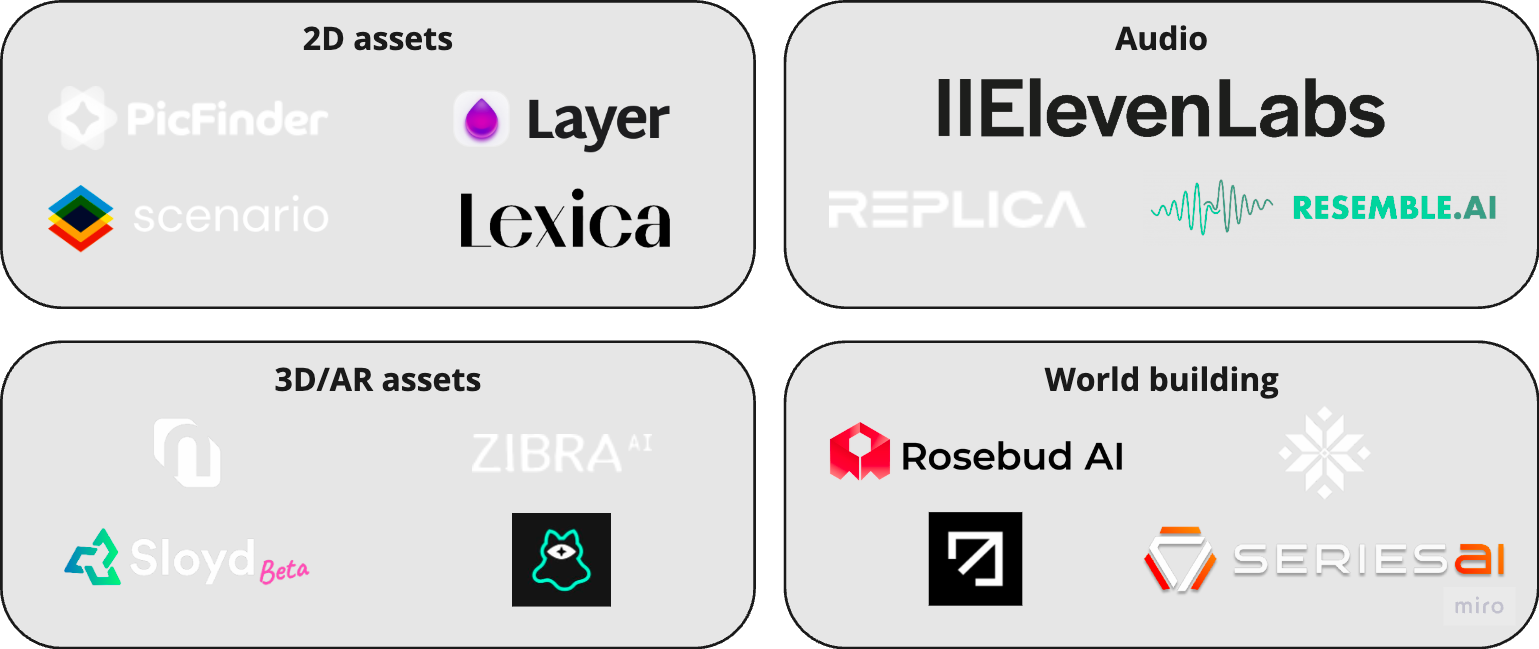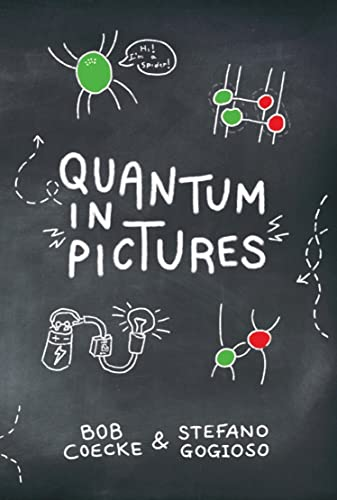January '24: Beyond Creation
How AI is impacting gaming beyond asset creation, quantum physics in pictures, and the return of Gamecraft.

Hello and welcome to the first newsletter of 2024. Hope you’re having a great start to the new year.
This month, Akshat and Dhruv explore how AI is impacting gaming beyond asset creation, and Jonas reviews a picture book on quantum physics.
If you missed them last time, here are our predictions for this year.
Enjoy.
Mattias and the Moonfire team
🌓🔥
The Snapshot
Here’s a quick roundup of interesting stuff we saw this month:
- 22 year-old programmers are now as good as 28 year olds because they're more at ease using AI – good news for young founders.
- The Mars colonisation tech stack.
- GPT-4, without special prompting, beat Stanford School of Medicine students in free-response case questions.
- Why the open source AI revolution hasn’t happened yet.
- The next major security challenge for LLMs: sleeper agents.
- How early Stripe operated like a flock of birds.
What's Up at Moonfire?
AI in gaming: Why generative AI won’t transform game asset creation – yet

Gaming and AI go way back. 1972 saw the first example of AI being used to create a multiplayer game in Pong. 1982 brought in collision detection for NPCs and pathfinding – think Pac-Man: each ghost had a unique behaviour, with Blinky chasing Pac-Man, and Inky trying to position itself in front of Pac-Man. The ‘90s saw finite-state machines in games like Doom and Half-life. The 2010s showed the power of deep reinforcement learning with OpenAI’s agent, OpenAI Five, beating the best human opponents at Dota 2. Now we’re in the early days of LLMs.
The transformative potential of generative AI in gaming is undeniable. We’re already seeing the early impact of AI generation on code, 2D and 3D assets, avatars and autonomous agents, to entire games. In the long run, alongside the parallel development of AR and VR, it will transform all immersive 3D worlds.
From scale to intelligence
But the gaming industry has changed. It has transitioned from the ability to supply packaged goods at scale to developing intelligent, feedback-driven models in internet-based and mobile gaming. This shift has led to the emergence of new problem areas and opportunities in creating engaging IP with emergent gameplay, establishing strong feedback loops, and exploring alternative monetisation methods like skins and microtransactions.
With three billion gamers and the immersive content that gaming produces, creating new gaming infrastructure has massive potential to solve problems of tool fatigue, ballooning costs of production, marketing and live operations. With new platforms, new gameplay mechanics and new accessibility of gaming infrastructure, creators can push the envelope further to focus on creating content that monetises. At the same time there are new avenues to tap into discovery and distribution that did not exist ten years ago which are making infrastructure for gaming help thread needles to bundle a cross platform publishing, marketing and content generation strategy.
What opportunities are there for AI to solve these gaming infrastructure issues?
The hype and reality of AI asset creation
Being about 40% of most game budgets, asset creation remains the holy grail of gaming infrastructure. Most AAA studio gaming projects resemble construction projects, requiring huge up-front investment with no revenue until year three onwards. And the bulk of this is due to the amount of work that goes into developing the art pipeline.
Generative AI can be a big unlock here, driving content creation at lower cost and at scale. But the lack of quality and maturity today is making game studios hesitant.
Asset creation remains the biggest bottleneck to progress. While we are on the lookout for great AI tools to assist in this process, none of them are able to deliver the quality that we typically seek in a studio game.
– CTO at a F2P game development studio
AI has the benefit of being consistently, tirelessly average, but human artists have the potential to greatly outperform AI. And that’s vital when your product aspires to unique, highly detailed fictional worlds in which people want to invest their time and money.
This disparity is especially stark in complex tasks like rigging (where developers add a virtual skeleton inside a character model for movement) and fine tuning 3D assets. Navigating licensing and IP rights, particularly if you’re selling to large enterprises or big studios, adds another layer of complexity.
What will be more useful in the near-term for game studios is infrastructure that can help accelerate specific aspects of the production pipeline – focusing on tasks like rigging, variation and indexing, rather than trying to replace the creation process wholesale.
Generative AI tools, like Scenario, that can spin up style-consistent variations of existing assets, for instance, could cut down work that is typically outsourced to third-party agencies. AI could also revolutionise how assets are indexed and re-used, allowing studios to semantically search similar assets within their database and quickly re-use existing assets, reducing redundant work.
There are two other areas we think open up a lot of opportunity: live operations & engagement, and personalisation & analytics.

– Akshat & Dhruv 🌓🔥
Podcast of the Month
Gamecraft: The State of Play: 2024 (Ep. 9)
One of our favourite podcasts of last year, Gamecraft, is back.
Mitch Lasky and Blake Robbins kick off season two with an analysis of the current state of the video game business. They look at the implications of recent consolidation in the industry, the end of cheap money, and content vs distribution innovation and its impact on value creation.
Good Read of the Month
'Quantum in Pictures' by Bob Coecke & Stefano Gogioso

When Bob Coecke and Stefano Gogioso, the authors of Quantum in Pictures, taught quantum physics to school kids over the summer, leading them to not only pass but surpass the average score of Oxford’s Physics undergraduate exam, it piqued our interest.
In their book, Coecke and Gogioso present a novel way of teaching quantum physics involving only pictures: boxes, wires and spiders. This is very different from the traditional way of teaching this topic, which typically requires advanced maths skills. Having worked on this purely pictorial way of representing quantum processes over the last couple of decades, the authors not only made quantum physics more accessible to non-experts – it’s also being widely adopted by professionals and researchers in the quantum computing industry.
Its great contribution is that it makes a highly technical topic more approachable, using nothing but pictures. We like this approach as a matter of principle. It’s also the reason why we invested in companies like Brainboard, Latitude and PlayFetch!
– Jonas 🌓🔥
That’s all for this month. Let us know what you want to read and learn more about this year.
Until next time, all the best,
Mattias and the Moonfire team
🌓🔥

